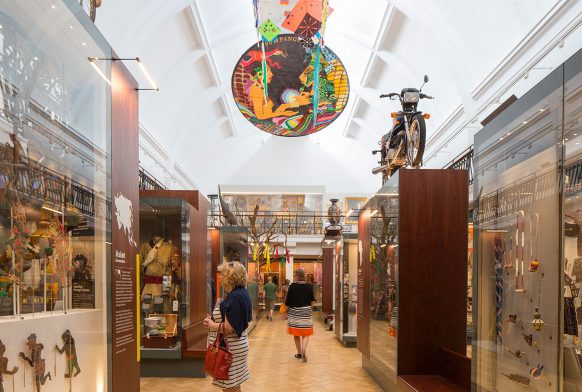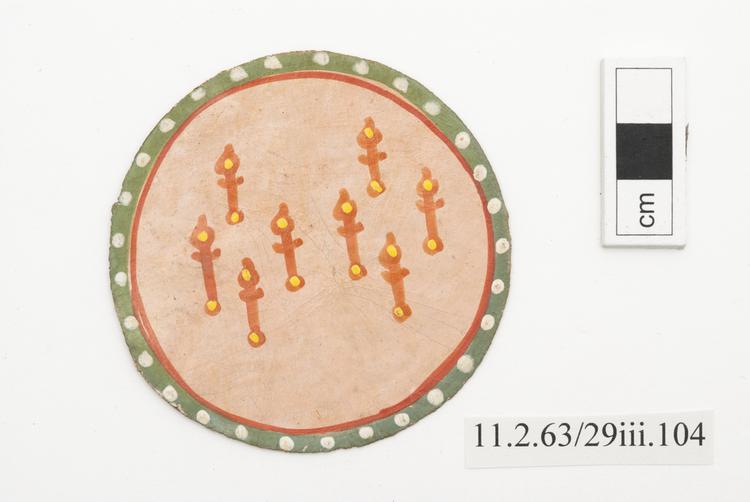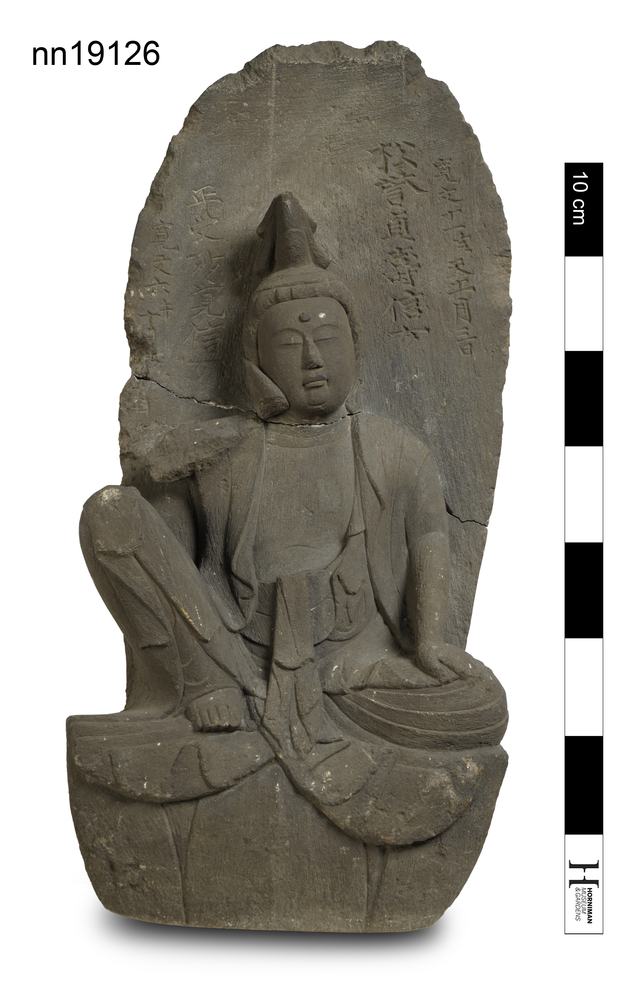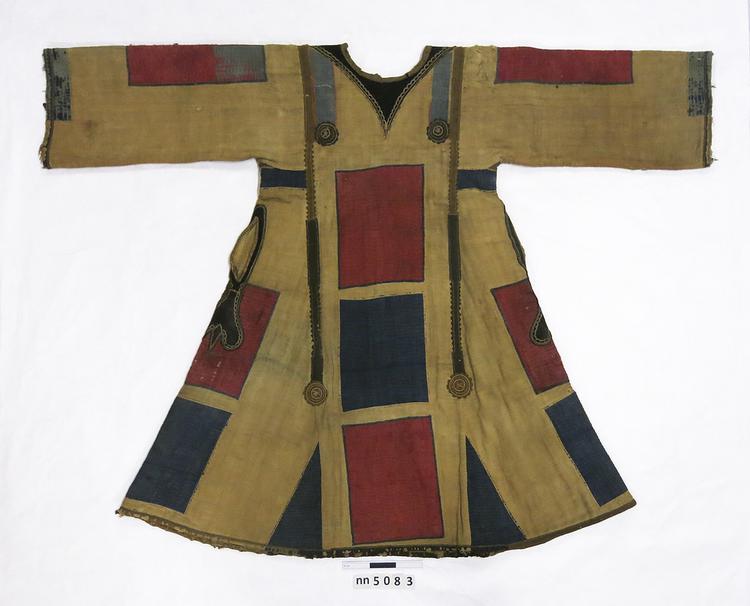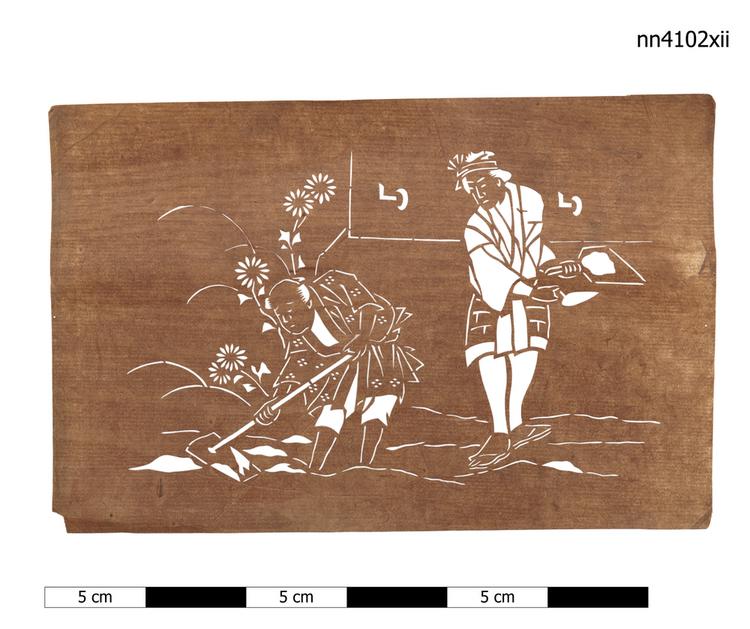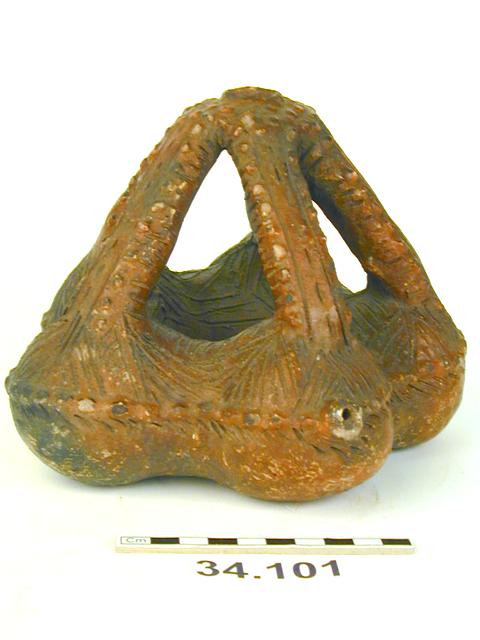
Clay container with five globular chambers forming a ring (as the base) with a coil coming up from each chamber to form a small ring at the top. Two of the chambers have singular openings. The pot is decorated with applied and incised decoration.
Chief’s Water Pot, or 'saqamoli', from Fiji, Western Polynesia. This slightly strange-looking, but technically very accomplished, hand-built pot is a 'saqamoli'. With a name that literally means ‘bunch of pomelos’ (a relative of the grapefruit), this pot is one of the many cases in which Fijian artists have been inspired by the forms of plants and animals in their rich environment. Pots such as this were always varnished with makadre tree resin when they were still hot from their initial firing, which waterproofed them to some extent, and bolstered their low-temperature, open-air wood-firing. Each of the pot’s five chambers is interconnected with the two on either side of it, and there are two holes for filling and emptying all five chambers. The pot affords many different ways to hold, carry, stand, hang up and pour it, so it is highly functional as well as having a quirky beauty. These pots became popular in the mid-19th century in the southeastern part of Viti Levu island near the Rewa River delta, and on the small but powerful island of Bau just off the shore of Viti Levu. They were reserved for chiefs ('ratu') to have their drinking water fetched and served in. Pottery, resin. Early 20th century. Formerly in the private collection of Lieutenant H. F. Mawbey.



